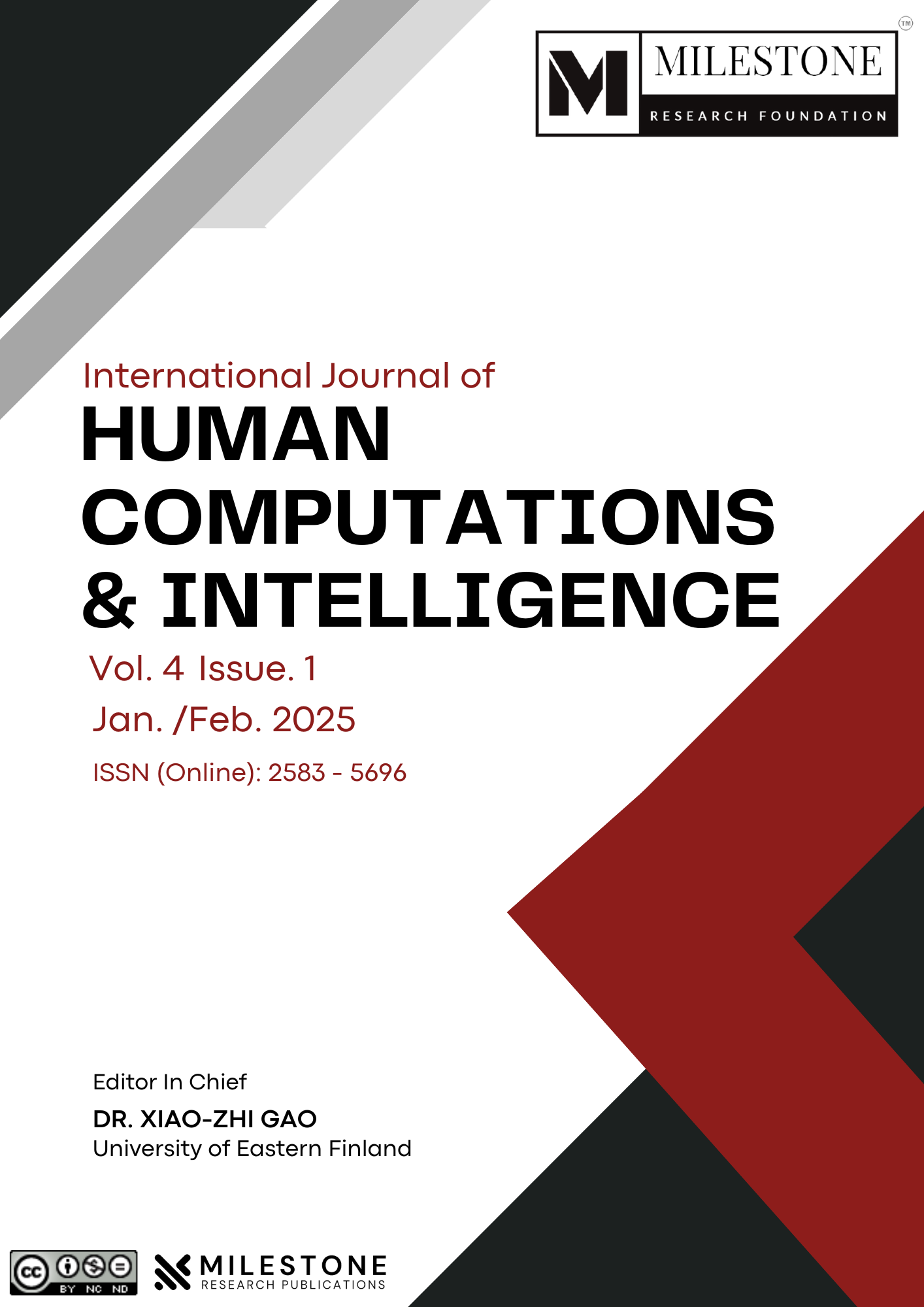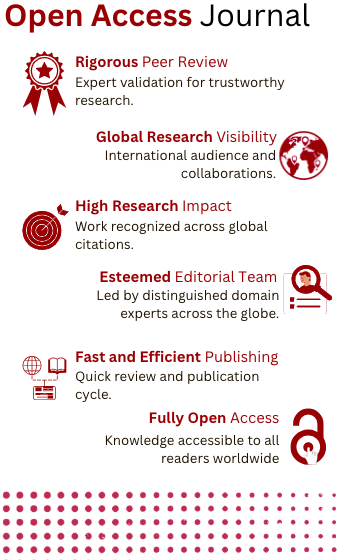Dynamic Financial Sentiment Analysis and Market Forecasting through Large Language Models
DOI:
https://doi.org/10.5281/zenodo.15111609Keywords:
Financial Sentiment Analysis, Market Forecasting, Sentiment Analysis, LLM, GPTAbstract
Sentiment analysis is essential for determining public opinion, customer feedback, and decision-making in different disciplines. While traditional sentiment analysis investigates general sentiment classification, aspect-based sentiment analysis with the finer aspect of sentiment identification delves into specialized sentiments directed toward specific product or service elements. In finance, sentiment analysis provides excellent value in market-related conditions, including trend forecasting, stock price forecasting, and investment decisions. However, in current-day research, financial sentiment analysis fails in two respects: the ability to analyze vast and dynamic unstructured financial discourse and, second, to track the domain-specific connotations. In this paper, we tackle these problems by utilizing three advanced models for financial sentiment classification: FinBERT, GPT-4, and T5. While evaluation metrics considered precision, recall, and F1-score, the results show that GPT-4 proved the best by achieving 93.5% precision, 92.8% recall, and an F1-score of 93.1%. This indicates the incredible ability of GPT-4 in generalization between different financial contexts. FinBERT comes next in prediction since it holds up best in structured financial texts, achieving an F1-score of 90.8%. T5, while showing strong generative capacity, was inhibited in its recall and generalization. This points out each model's principal strength and weakness, suggesting that GPT-4 is preferably suited for real-time tracking of financial sentiment, FinBERT for more structured financial analysis, and T5 for generating financial sentiment and explainable AI-type applications. This work advances the field by furnishing selections for ideal model choices based on application necessities in financial sentiment analysis.
References
Selvakumar, P., Mishra, R. K., Budhiraja, A., Dahake, P. S., Chandel, P. S., & Vats, C. (2025). Social media influence on market sentiment. In Unveiling Investor Biases That Shape Market Dynamics (pp. 225–250). IGI Global Scientific Publishing.
Madapuri, Rudra Kumar, and P. C. Senthil Mahesh. “HBS-CRA: Scaling Impact of Change Request Towards Fault Proneness: Defining a Heuristic and Biases Scale (HBS) of Change Request Artifacts (CRA).”Cluster Computing, vol. 22, no. S5, Dec. 2017, pp. 11591–99. https://doi.org/10.1007/s10586-017-1424-0.
Dwaram, Jayanarayana Reddy, and Rudra Kumar Madapuri. “Crop Yield Forecasting by Long Short‐term Memory Network With Adam Optimizer and Huber Loss Function in Andhra Pradesh, India.” Concurrency and Computation Practice and Experience, vol. 34, no. 27, Sept. 2022, https://doi.org/10.1002/cpe.7310.
Thulasi, M. S.., B. . Sowjanya, K. . Sreenivasulu, and M. R. . Kumar. “Knowledge Attitude and Practices of Dental Students and Dental Practitioners Towards Artificial Intelligence”. International Journal of Intelligent Systems and Applications in Engineering, vol. 10, no. 1s, Oct. 2022, pp. 248-53..
Busireddy Seshakagari Haranadha Reddy. “Deep Learning-Based Detection of Hair and Scalp Diseases Using CNN and Image Processing”. Milestone Transactions on Medical Technometrics, vol. 3, no. 1, Mar. 2025, pp. 145-5, doi:10.5281/zenodo.14965660.
Reddy, B. S. H., Venkatramana, R., & Jayasree, L. (2025). Enhancing apple fruit quality detection with augmented YOLOv3 deep learning algorithm. International Journal of Human Computations & Intelligence, 4(1), 386-396.
Han, C., Hilger, H., Mix, E., Böttcher, P. C., Reyers, M., Beck, C., Witthaut, D., Gorjão, L. R. (2022). Complexity and persistence of price time series of the European electricity spot market. PRX Energy, 1(1), 013002.
Sadik, M. R., Sony, R. I., Prova, N. N. I., Mahanandi, Y., Maruf, A. A., Fahim, S. H., Islam, M. S. (2024). Computer vision-based Bangla sign language recognition using transfer learning. In 2024 Second International Conference on Data Science and Information System (ICDSIS) (pp. 1–7). IEEE.
Kong, Y., Nie, Y., Dong, X., Mulvey, J. M., Poor, H. V., Wen, Q., & Zohren, S. (2024). Large language models for financial and investment management: Applications and benchmarks. Journal of Portfolio Management, 51(2).
Hadi, M. U., Qureshi, R., Shah, A., Irfan, M., Zafar, A., Shaikh, M. B., Akhtar, N., Wu, J., Mirjalili, S., et al. (2023). Large language models: A comprehensive survey of its applications, challenges, limitations, and future prospects. Authorea Preprints, 1, 1–26.
Akter, T., Samman, A. S. A., Lily, A. H., Rahman, M. S., Prova, N. N. I., Joy, M. I. K. (2024). Deep learning approaches for multi-class leather texture defect classification. In 2024 15th International Conference on Computing Communication and Networking Technologies (ICCCNT) (pp. 1–6). IEEE.
Kirtac, K., & Germano, G. (2024). Sentiment trading with large language models. Finance Research Letters, 62, 105227.
Kirtac, K., & Germano, G. (2024). Enhanced financial sentiment analysis and trading strategy development using large language models. In Proceedings of the 14th Workshop on Computational Approaches to Subjectivity, Sentiment, & Social Media Analysis (pp. 1–10).
Fatemi, S., & Hu, Y. (2023). A comparative analysis of fine-tuned LLMs and few-shot learning of LLMs for financial sentiment analysis. arXiv preprint arXiv:2312.08725.
Lee, J., Stevens, N., & Han, S. C. (2025). Large language models in finance (FinLLMs). Neural Computing and Applications, 1–15.
Roumeliotis, K. I., Tselikas, N. D., & Nasiopoulos, D. K. (2024). LLMs and NLP models in cryptocurrency sentiment analysis: A comparative classification study. Big Data and Cognitive Computing, 8(6), 63.
Nie, Y., Kong, Y., Dong, X., Mulvey, J. M., Poor, H. V., Wen, Q., & Zohren, S. (2024). A survey of large language models for financial applications: Progress, prospects and challenges. arXiv preprint arXiv:2406.11903.
Kirtac, K., & Germano, G. (2025). Large language models in finance: Estimating financial sentiment for stock prediction. arXiv preprint arXiv:2503.03612.
Xie, Q., Han, W., Chen, Z., Xiang, R., Zhang, X., He, Y., Xiao, M., Li, D., Dai, Y., Feng, D., et al. (2024). FinBen: A holistic financial benchmark for large language models. Advances in Neural Information Processing Systems, 37, 95716–95743.
Bond, S. A., Klok, H., & Zhu, M. (2023). Large language models and financial market sentiment. Available at SSRN 4584928.
Kurisinkel, L. J., Mishra, P., & Zhang, Y. (2024). Text2TimeSeries: Enhancing financial forecasting through time series prediction updates with event-driven insights from large language models. arXiv preprint arXiv:2407.03689.
Stribling, Daniel, et al. "The model student: GPT-4 performance on graduate biomedical science exams." Scientific Reports 14.1 (2024): 5670.
Harit, Anoushka, et al. "Breaking Down Financial News Impact: A Novel AI Approach with Geometric Hypergraphs." arXiv preprint arXiv:2409.00438 (2024).
Senthilselvi, A., R. P. Prawin, and V. Harshit. "Abstractive Summarization of YouTube Videos Using LaMini-Flan-T5 LLM." 2024 Second International Conference on Advances in Information Technology (ICAIT). Vol. 1. IEEE, 2024.
Downloads
Published
How to Cite
Issue
Section
License
Copyright (c) 2025 Haranadha Reddy Busireddy Seshakagari, Aravindan Umashankar, T Harikala, L Jayasree, Jeffrey Severance

This work is licensed under a Creative Commons Attribution-NonCommercial-NoDerivatives 4.0 International License.







